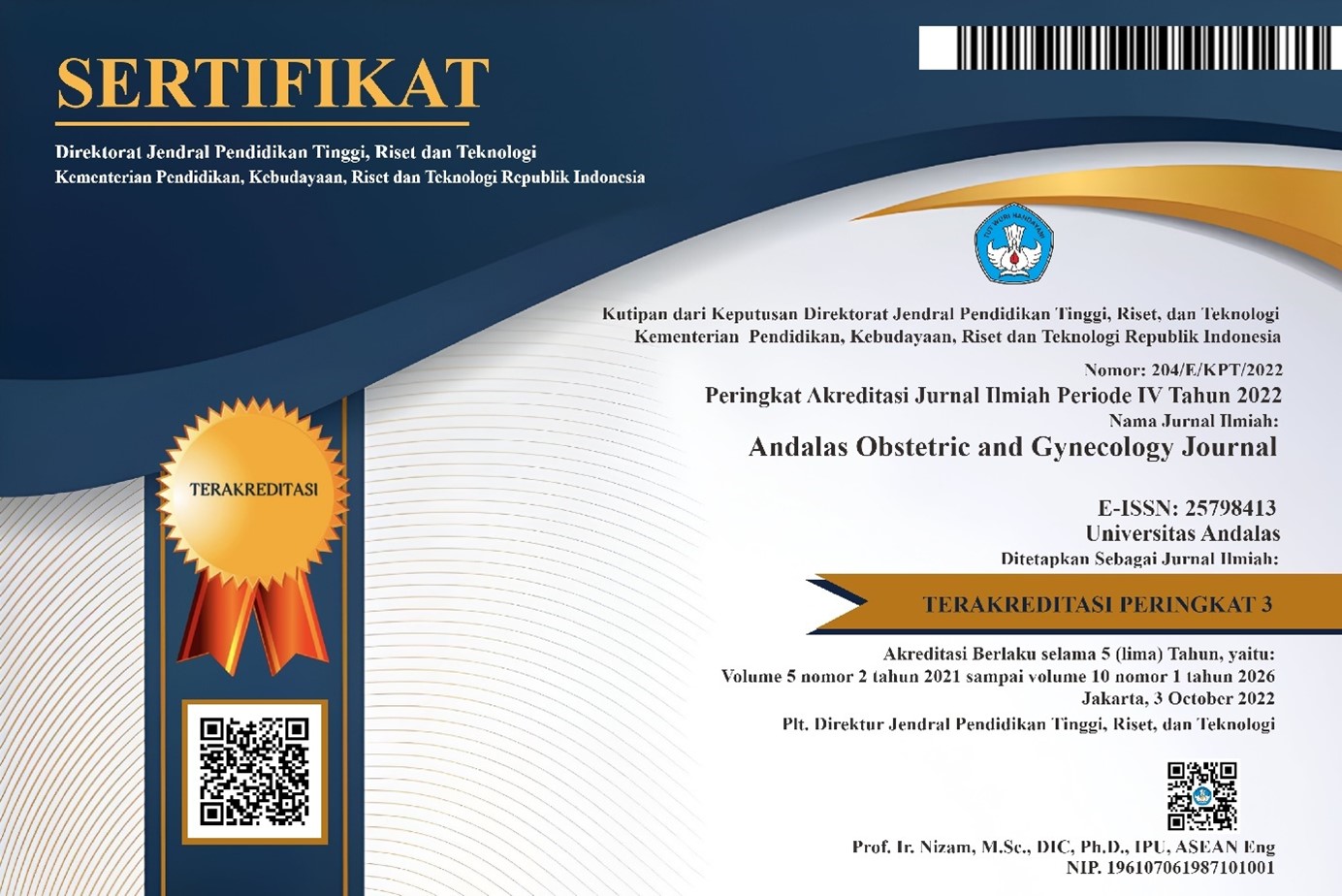Management of Eclampsia Patients Post-ROSC (Return of Spontaneous Circulation) at RSUP M Djamil Padang
DOI:
https://doi.org/10.25077/aoj.8.2.801-808.2024Keywords:
Eclampsia, Intensive Therapy, Obstetric EmergencyAbstract
Background: Eclampsia is a convulsive condition associated with hypertensive disorders in pregnancy which threatens maternal and fetal life which generally requires intensive care. Worsening conditions can complicate multi-organ disorders, coagulation disorders, and infections.
Case: A 20 year old, nulliparous woman, preterm gestational age 35-36 weeks of gestation, referred to M Djamil General Hospital with complaints of 3 seizures at home and loss of consciousness. At the time of examination, we found apathetic consciousness; blood pressure of 210/118 mmHg. Urine protein is +3. The patient was terminated by emergency cesarean section. The patient was anesthetized under general anesthesia, and was treated in the postoperative intensive care unit with a ventilator attached. During hospitalization, the patient developed recurrent seizure, laryngeal edema and cardiac arrest, but returned to circulation spontaneously after resuscitation. Hemodynamic and metabolic monitoring is strict on the patient and managed appropriately with good result.
Discussion: Eclampsia preceded by preeclampsia is known as a theoretical disease with a two-stage pathogenesis. The principles of eclampsia management are control of seizure, regulation of blood pressure, and termination of pregnancy. Collaboration between multidisciplinary teams determines the success of managing eclampsia cases and improving outcomes for the better.
Downloads
Published
Issue
Section
License
Copyright (c) 2024 Ressy Permatasari, Emilzon Taslim, Yusrawati

This work is licensed under a Creative Commons Attribution 4.0 International License.
Copyright
Authors who publish with this journal agree to the following terms:
- Authors retain the copyright of published articles and grant the journal right of first publication with the work simultaneously licensed under a Creative Commons Attribution 4.0 International License that allows others to share the work with an acknowledgment of the work's authorship and initial publication in this journal.
- Authors are able to enter into separate, additional contractual arrangements for the non-exclusive distribution of the journal's published version of the work (e.g., post it to an institutional repository or publish it in a book), with an acknowledgment of its initial publication in this journal.
- Authors are permitted and encouraged to post their work online (e.g., in institutional repositories or on their website) prior to and during the submission process, as it can lead to productive exchanges, as well as earlier and greater citation of published work (See The Effect of Open Access).
License:
Andalas Obstetrics and Gynecology Journal (AOJ) is published under the terms of the Creative Commons Attribution 4.0 International License. This license permits anyone to copy and redistribute this material in any form or format, compose, modify, and make derivatives of this material for any purpose, including commercial purposes, as long as they credit the author for the original work.







